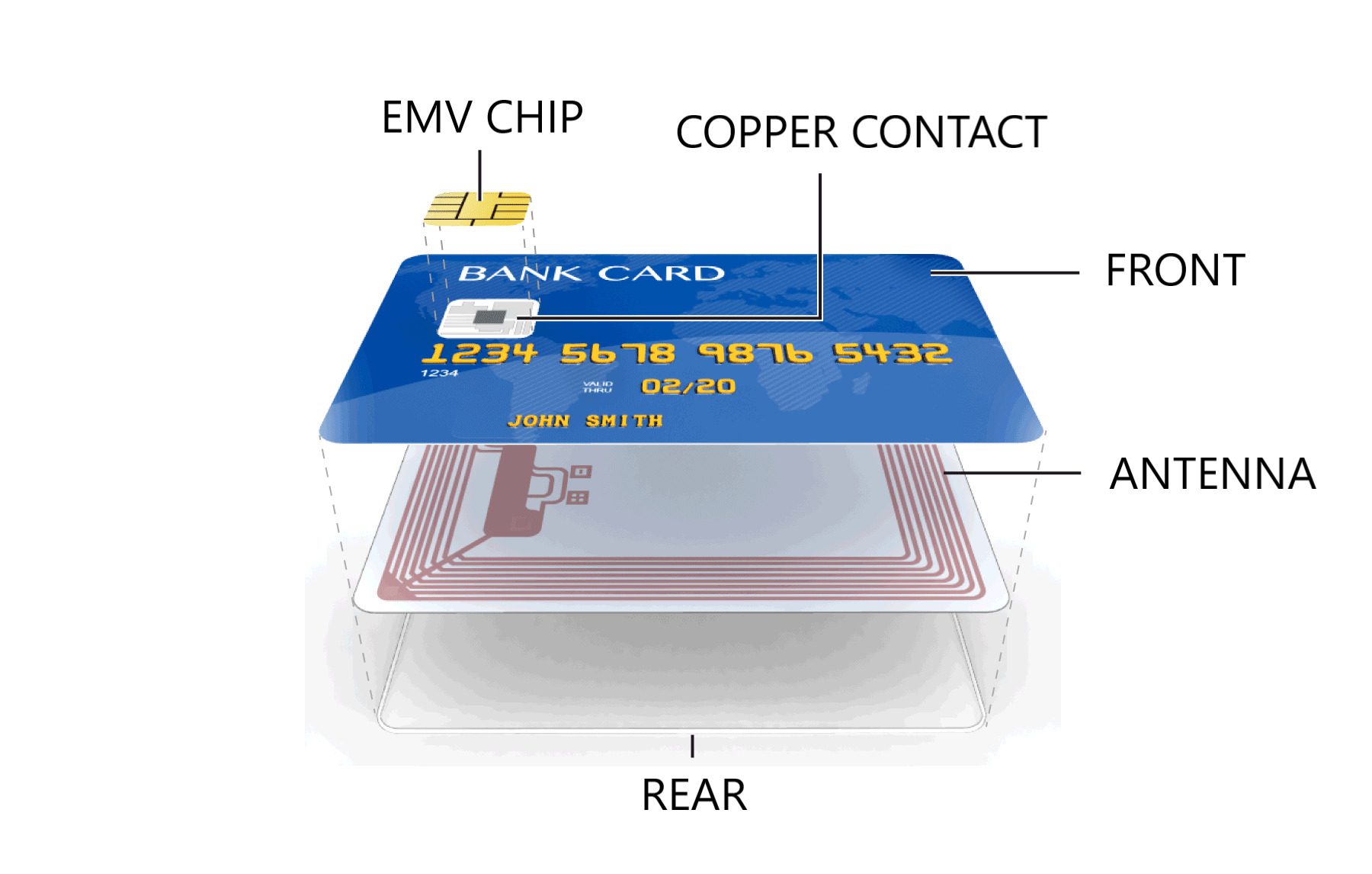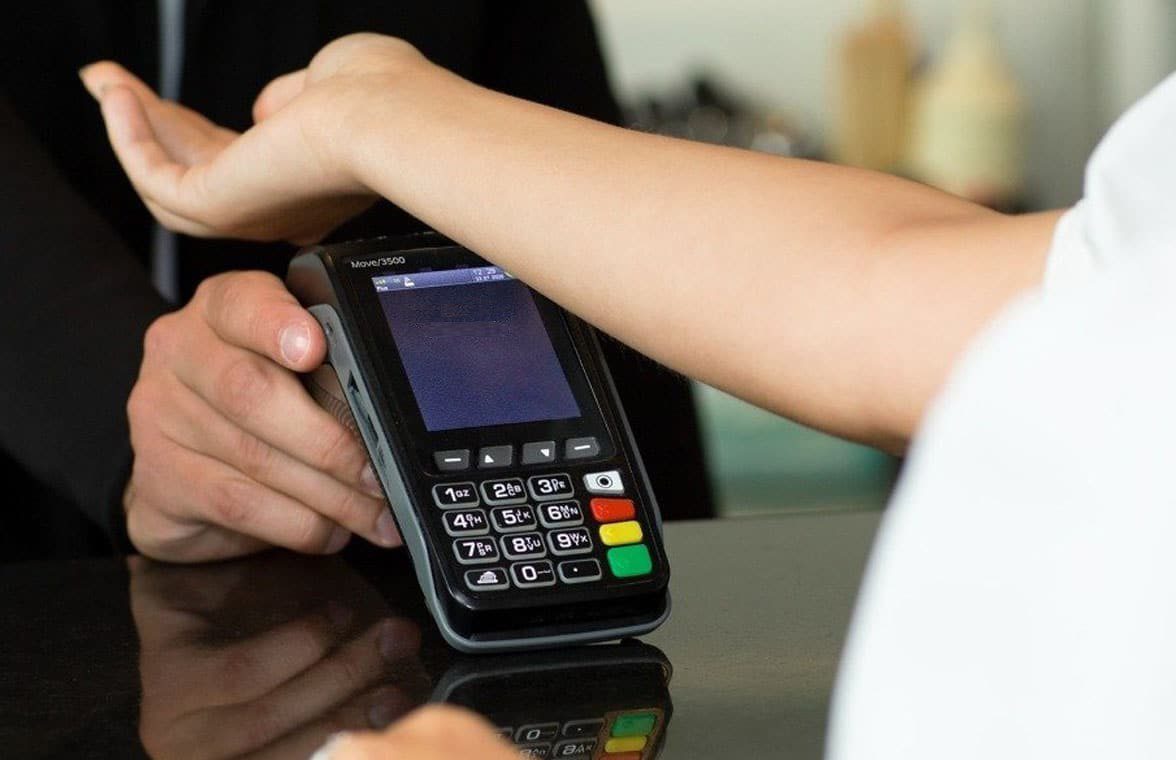What actually happens when you tap your credit card on to a machine when making a purchase? This digital transfer of value, technically labeled an EMV payment, may work but doesn’t it feel outdated?
The World of EMV Payments and Contactless Payment
EMV stands for EuroPay, Mastercard, Visa, and it is a payment method based on a technical standard for chip & PIN and contactless payment at terminals.
When you get your debit cards or credit cards from your bank, your account data is stored on these integrated circuit chips and magnetic stripes for backward compatibility.
As of 2021, The cards that house these chips and magnetic stripes are cards composed of various materials like plastic or metal. They are 85.60 by 53.98 millimetres and .078 millimeters thick and must be physically inserted or “dipped” into a reader or can be read over a short distance using near-field communication technology and when transacted are authenticated by methods employed by the card issuer, such as a personal identification number (PIN) or digital signature.

These cards are built to standards based on ISO/IEC 7816 for contact cards, and standards based on ISO/IEC 14443 for contactless cards. The ISO and IEC are organizations that set international standards for all electrical, electronic and related technologies and the international standards for all electrical, electronic and related technologies, sort of like a division of a factory ensuring quality control.
This standard is what your card issuer uses, and it is what mobile apps like Apple, Samsung, and Google Pay use.
EMV is extremely complex in both chip technology used and the multitude of standards, certifications, and corporate partner approvals that must go on in order to get your “payment instrument” to work with EMV. Many companies that wish to utilize the network spend millions of dollars just to get their ready-to-go payment products into the EMV market. It is the most widely used payment method with billions of dollars invested into its infrastructure, with almost complete domination in the payment methods industry.
Human Microchip Implants a Contender for the Future
Have you ever seen a show on TV where tracking devices are injected into marine organisms or mammals? These devices that are injected are what we call nfc/rfid implants.
These microchips are encased in silicate glass and are implanted subcutaneously (subdermally).
Now Imagine having a micro version of this device in your body, in an area of your hand called the “thenar webspace” – the skin between your index finger and your thumb – and being able to pay for something by just tapping your hand on a payment terminal.
It almost sounds like something out of a sci-fi movie and many believe that the future of human evolution will involve biohacking integrated technologies such as rfid and nfc implants with the purpose of making our lives more efficient.
However, the chips used in payment cards are far more sophisticated than those used in simple RFID or NFC devices, they employ cryptographic processors to enable secure communication between cards and payment terminals. Protection of those cryptographic keys is multi-layered and requires high security facilities to handle the cards when they are programmed with account data (called “personalization”).
Regardless of the facts, you can simply use a payment terminal to spit out decrypted payment data from a contactless payment card. However, currently developers don’t have access to the keys required to encrypt payment data in a way that will allow terminals to read it.
The reality is that unless the major payment networks authorize these devices and support the companies developing them, it’s not going to happen.
The Future is in our Hands
At this point in time, the major payment networks that enable global settlement (payment) between your personal bank and the merchant’s bank are not interested in authorizing implantable devices on their network.
For years, Swipemint has had chip implant technology that can work with payment terminals but the problem could be an ethical misrepresentation. Biohacking is often misrepresented and compared to human cloning – bio engineering of living organisms – and the payment industry have inherited a fear that these technologies could damage its reputation.
Biohacking is misunderstood. There is a clear difference between biohacking the human anatomy through the fusion of technological devices, machines versus bioengineering and procreating a DNA copy of living consciencessness in a lab.
It could be that companies developing payment implants will face the same resistance that bioengineering companies and governments have faced in their attempts to clone DNA, although the latter faces a clear ethical paradox, regardless of their contributions to the advancement of science.
A Solution that Works Now

Currently the only functionable solutions that have been tested are device conversions that are conducted by companies such as Swipemint. The way this patent pending process works is by transplanting and reshaping existing and functional payment chip + antenna inlays into an implant and encapsulating them with a specially formulated biopolymer coating.
These implant conversions are commissioned by private individuals and although they do work flawlessly, currently the production process is not scalable for mainstream adoption. This model example of implants replacing cards could set the precedent for future devices.



































